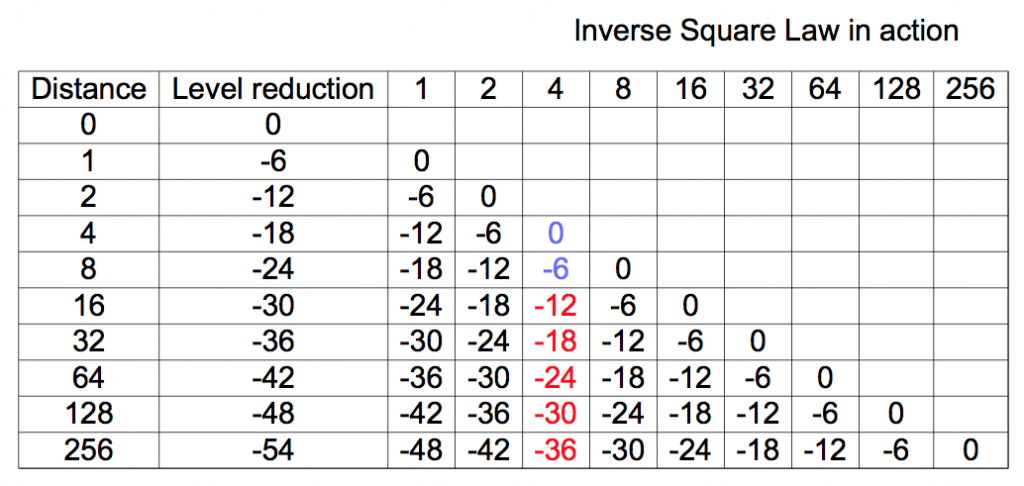There are two good reasons to mic the instruments in a pit. For one, anytime there is a need for putting the musicians in a pit there is obviously something on stage. It could be a broadway musical, ballet, opera, etc…
Some “purists” would suggest that there is no reason to mic the instruments in the pit but they would be misinformed.
Unlike an orchestra shell / reflector setup that is designed and used to enhance the acoustic instruments on stage, a pit is neither. A pit is a compromise of space versus audience seating. A pit is neither acoustically similar to an orchestra shell but is in some ways a worst case scenario. For anyone but the front few rows, there is no direct sound to be had from the pit because of the pit rail and the stage extending out of the pit. There is a window of direct sound to be had but it’s not available until you get up into the balconies. What this means is that a patron seated on the orchestra level (other than the first few rows) are hearing reflected sound only. None of which is imaging sonically to the pit. Instead the reflections may be coming from the ceiling which may be as far away as 100 feet. A round trip up and down again could be 200ms (a 1/5 of the second) and suffer significant air loss along it’s journey. In sound design terms this situation would be completely unacceptable but for the “purist”, that is acceptable and preferred. Ignoring the matter of reflected sound versus direct sound (what the front rows get), there is the matter of the inverse square law which states that the sound level drops by 1/2 with each doubling of the distance from the sound source. Ignoring boundary effects, what this means is that in a typical concert hall, what may be acceptable as a sound level near the pit is completely unacceptable in the upper balconies. Industry standard for level variance is =6db. This means that in general, every seat should be covered in such a way to have a variance of -6db. If the front row is our 0db reference (closest to pit), the furthest seat in a venue should be no less than -6db (1/2). Acoustically and physically, this is impossible but easily accomplished with a well designed sound system. For reference, I recently worked in a venue that measures roughly 150 feet to the furthest seat from the stage. What sort of level could one expect to experience siting in that seat if there is only acoustic sound coming from the pit? Let’s assume that the person sitting on the front row in the very center of the venue is 4′ from the conductor & first violin. What they are hearing is our 0db reference. Looking at the following chart, as we travel 16′, 32′,64′,128′, etc… we quickly move out of the “acceptable” realm of sound system design. The -6db window. By the time we get to the far upper balcony, the level has been reduced by at least 30db.
In any sound system design, there would be speakers that are involved to provide coverage in the furthest seats. In the case of an all acoustic pit orchestra, those sitting in the furthest will have a completely different experience than those who purchased seats near the pit. I have recently heard the argument that people should get good seats early and those that get poor seats can just suffer. I agree with this concept IF the seating is defined as good and poor and everyone is told in advance of purchase that some seats are inferior to others, anyone who chooses a poor seat shouldn’t expect the same experience as someone who paid more and has a good seat. We all know this is NOT how things work. Instead there are expensive seats and less expensive seats but no one expects to be unable to hear just because they have a less expensive seat. Consequently, it’s the job of the venue / sound system designer / production sound designer to make every attempt to make sure that every seat in the venue fits within the previously stated goal of a 6db window of variation.
In an acoustic space, not only is there the matter of a loss of level per doubling of the distance but also air loss which reduces high frequencies and then boundary effects which enhance low frequencies but don’t help the lost high frequencies. “Muddy” is an appropriate term for what to expect in the far seats of a concert hall when listening to an orchestra in a pit without some sort of “enhancement”.
In summary, there are (3) concepts that should be considered regarding whether there is a need for enhancing an acoustic event.
1. Loss of level due to distance
WIKI – Inverse Square Law
sengpielaudio.com – square law calculator
hyperphysics.phy-astr.gus.edu – inverse square law
hyperphysics.phy-astr.gus.edu – Estimating Sound Levels With The Inverse Square Law
acousticalsurfaces.com – Inverse Square Law
2. Air loss due to distance
sengpielaudio.com – sound distance calculator
3. Boundary Effect – explanations
SYN AUD CON – How Boundaries Affect Loudspeakers – article
SYN AUD CON – How Boundaries Affect Loudspeakers PDF
Sound On Sound – All About The Boundary Effect
argen.com – Is Speaker Boundary Interference Killing Your Bass?
audiomasterclass.com – How A Boundary Mic Gives Crystal Clear Sound
A rule of thumb regarding loss from distance is that 10x the distance will result in a loss of 20db. If 4 feet is your 0db reference point, 40 feet will be -20db.


